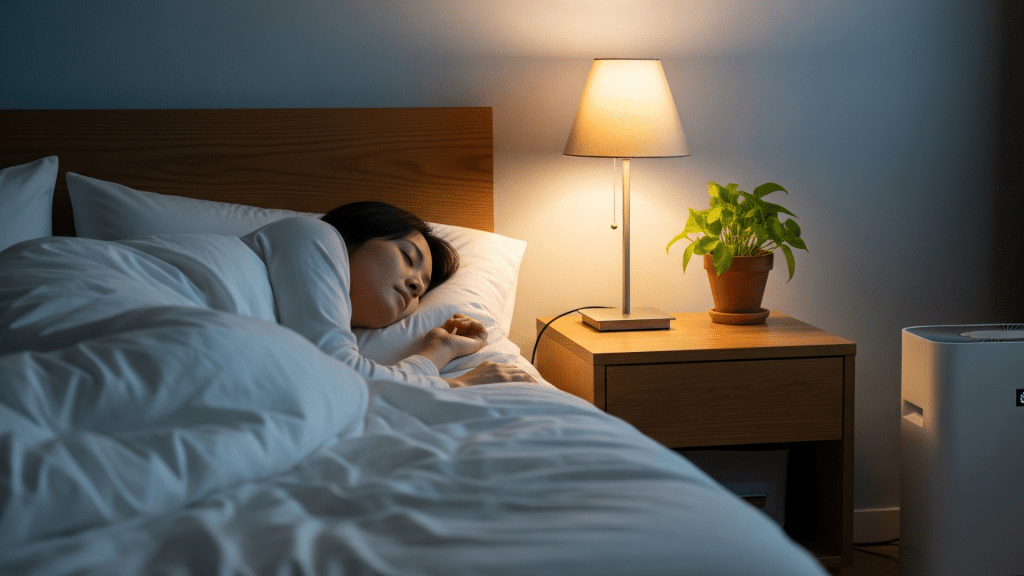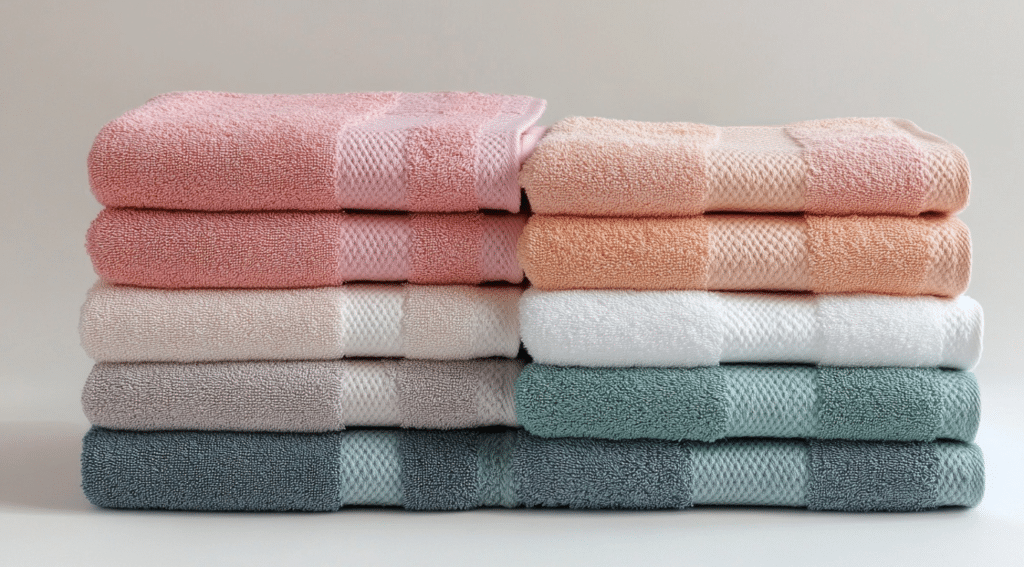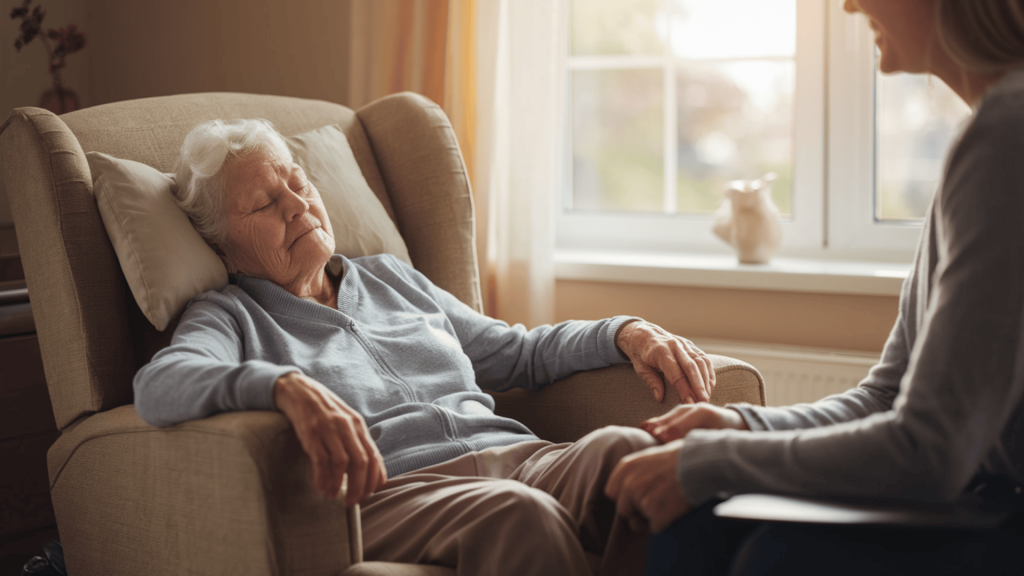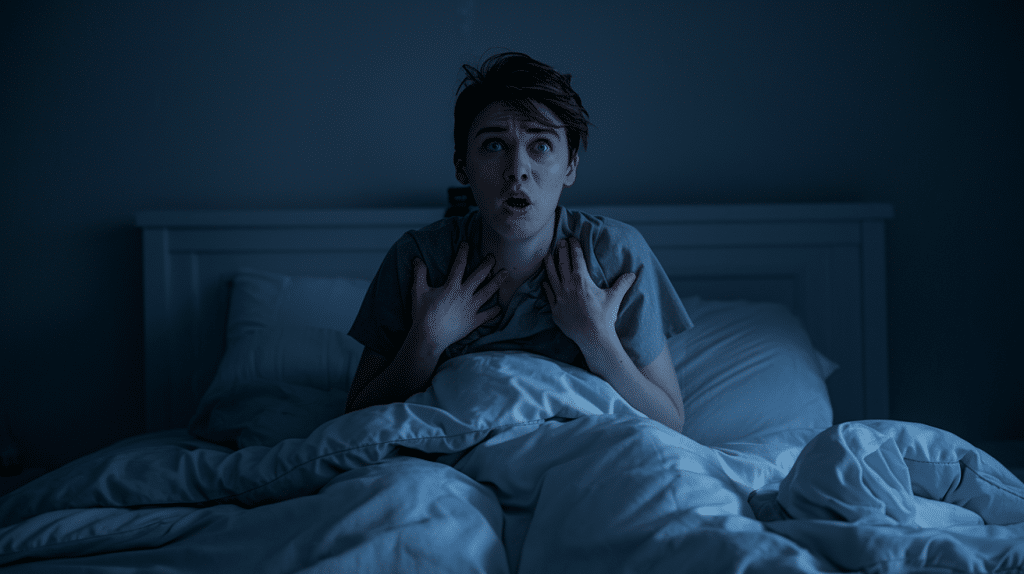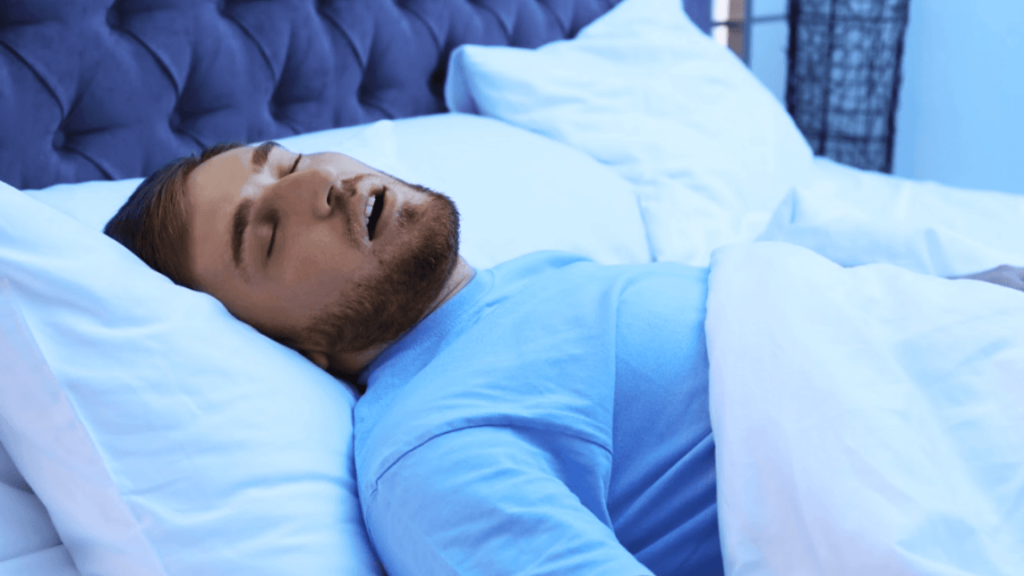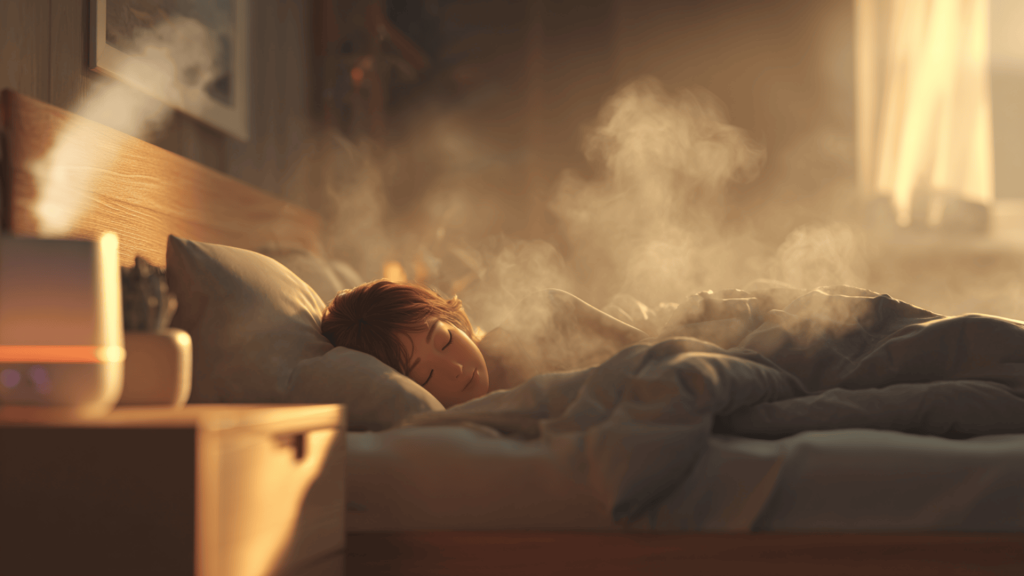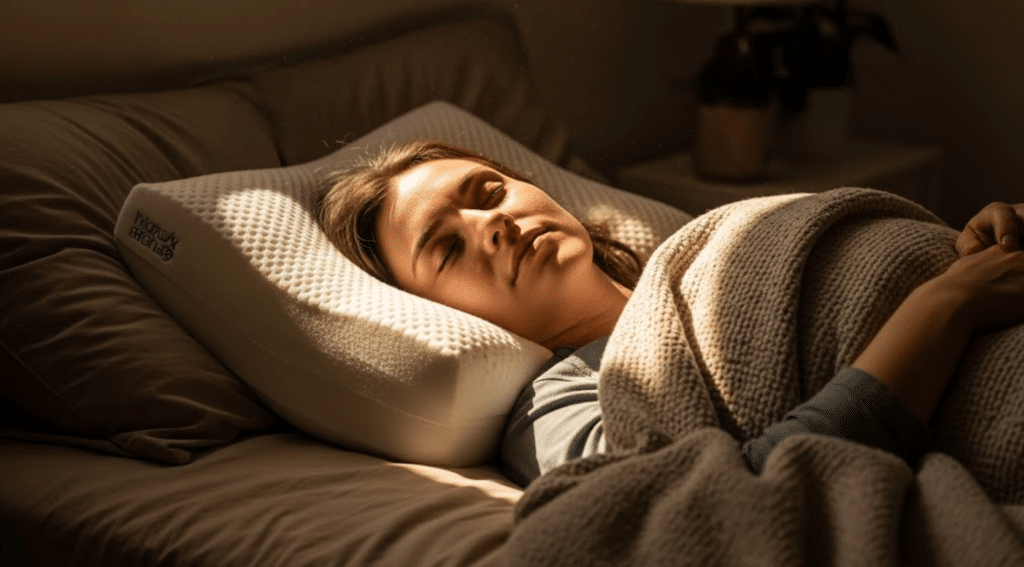Tired of relying on a CPAP machine every night just to get some decent sleep? I hear you, you’re not the only one. A lot of people with sleep apnea wonder if there’s a better, more natural way to feel rested.
If you’ve been asking yourself how to cure sleep apnea naturally at home without CPAP, you’re in the right place.
Today, I’ll walk you through simple lifestyle shifts, sleep habits, food choices, and natural techniques that might actually help you breathe easier at night.
You’ll also find a few helpful tools and know when it’s time to check in with a doctor. Let’s get you the control of your sleep without the mask.
How to Cure Sleep Apnea Naturally at Home Without CPAP: Is It Possible?
Many people with mild to moderate obstructive sleep apnea find relief through natural methods, lifestyle changes, or non-CPAP devices. These sleep apnea alternatives can improve breathing and reduce nighttime symptoms.
But success often depends on the cause and severity of your condition. Natural remedies may not work for everyone, especially if sleep apnea is linked to other health issues.
It’s essential to understand your sleep apnea type and monitor your progress closely while trying any at-home solutions.
Lifestyle Changes to Reduce Sleep Apnea Symptoms
Small daily changes can help alleviate sleep apnea by improving your breathing, promoting deeper sleep, and reducing pressure on your airway.
1. Weight Loss and Body Fat Around the Neck
Excess fat around the neck can narrow your airway, making it harder to breathe at night. Losing weight helps ease that pressure, especially if you’re overweight.
Even a slight drop in body weight can make a difference in reducing snoring and sleep interruptions. Focus on making steady, healthy changes, such as making better food choices and staying active.
2. Daily Exercise for Breathing and Sleep Quality
Engaging in physical activity every day can strengthen your lungs and improve your sleep quality. You don’t need to run or lift weights; even walking, yoga, or stretching can help.
Regular activity helps maintain a steady weight, supports better breathing, and may lower stress levels that can impact sleep. Aim for at least 30 minutes a day.
3. Quit Smoking and Avoid Alcohol Before Bed
Smoking irritates your airway, making it more likely to collapse while you sleep. Alcohol relaxes throat muscles and can trigger blocked breathing.
Together, they make sleep apnea worse. Quitting smoking and skipping alcohol, especially at night, may help you breathe more easily and rest better. Talk to your doctor for support if needed.
4. Managing Allergies, Congestion, and Air Quality
Stuffy noses and allergies can block airflow during sleep. Keeping the air clean and your sinuses clear helps you breathe without struggle.
Use air purifiers, wash bedding often, and try saline sprays or a steamy shower before bed. If allergies are strong, ask your doctor about options that won’t affect your sleep.
Foods That Help or Hurt Your Breathing at Night
Some foods make breathing easier while others can cause inflammation or congestion that worsens sleep apnea during the night.
Anti-Inflammatory Foods That Support Airway Health
Certain foods can calm inflammation and support better airflow as you sleep. Leafy greens, such as spinach or kale, berries, turmeric, ginger, fatty fish, and nuts, all possess anti-inflammatory properties.
These foods may help reduce swelling in the airway, making it easier to breathe. Adding them to your meals during the day may lead to better rest at night.
Foods to Avoid That May Worsen Sleep Apnea
Some foods can trigger inflammation or mucus buildup that can block your airways during sleep. Dairy products, high-sugar snacks, fried foods, and spicy foods should be avoided before bed, as they can exacerbate symptoms.
These foods may cause post-nasal drip, bloating, or muscle relaxation that affects breathing. Limiting these items, especially in the evening, can improve sleep quality.
Sample Daily Meal Plan for Sleep Support
A good sleep-friendly meal plan includes simple, nourishing foods.
- For dinner, try grilled salmon with steamed broccoli and brown rice.
- Add a small salad with olive oil and turmeric dressing.
- As a bedtime snack, choose a banana with almond butter or a few walnuts and chamomile tea.
- Avoid anything heavy or spicy before going to bed.
Best Sleeping Positions for Better Breathing
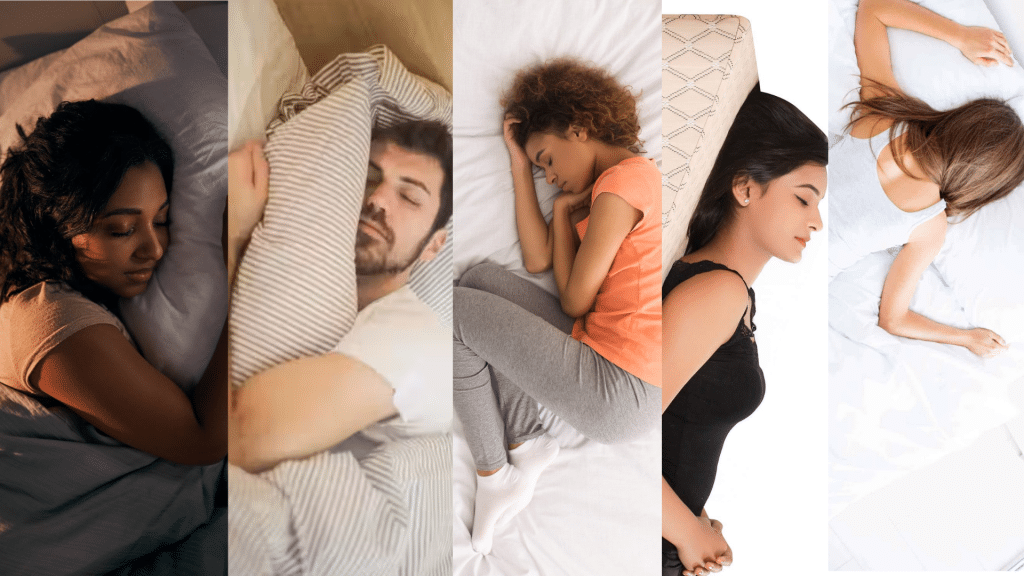
Your sleep position affects how easily air moves through your throat, which can reduce or worsen sleep apnea symptoms.
Left Side Sleeping: Keeps the airway open, supports the heart and digestion, and often reduces snoring and breathing pauses during sleep.
Right Side Sleeping: Improves airflow and reduces snoring, though it may slightly increase acid reflux in some people compared to the left side.
Fetal Position: Sleeping curled on your side can prevent airway blockage and help you feel secure, especially with a body pillow.
Inclined Back Sleeping: Sleeping on your back with your head raised can reduce throat collapse and improve nighttime breathing.
Stomach Sleeping: May keep the airway open, but can strain your neck and back, so it’s less comfortable for long-term use
At-Home Devices That Can Help (Without CPAP)
You don’t have to rely on a CPAP machine to manage sleep apnea. Several non-prescription devices are available to help improve airflow during sleep.
These include oral appliances that adjust your jaw or tongue position, chin straps to keep your mouth closed, and nasal dilators that open your nasal passages.
Some people also benefit from humidifiers or air purifiers, which improve air quality and reduce congestion.
While not as powerful as medical devices, these tools can offer comfort and relief when used consistently, particularly for individuals with mild to moderate symptoms who seek simple, at-home support.
Sleep Apnea Alternatives (Beyond CPAP)
If you can’t use CPAP, other medical and non-medical options may help reduce sleep apnea symptoms and improve sleep quality.
- Oral Appliances: Devices like mandibular advancement devices (MADs) or tongue retaining devices (TRDs) reposition the jaw or tongue to keep airways open.
- BiPAP Machines: Similar to CPAP but provides two pressure levels: one for inhaling and one for exhaling, making breathing feel easier.
- Inspire Therapy: A small device implanted under the skin that stimulates airway muscles during sleep to keep them from collapsing.
- Positional Therapy: Trains you to avoid back sleeping, often using wearable devices, pillows, or special sleepwear.
- Weight Loss Programs: Medical weight loss supervision or bariatric surgery may help reduce symptoms by lowering pressure on the airway.
- Surgery Options: Procedures like UPPP or nasal surgeries remove or reshape tissue blocking the airway, but are often used after other treatments fail.
Breathing and Throat Strengthening Techniques
Targeted exercises can train your airway muscles to stay firm and open, reducing blockage while you sleep at night. Here are some options for you to try:
Yoga and Pranayama (Breathing Exercises)
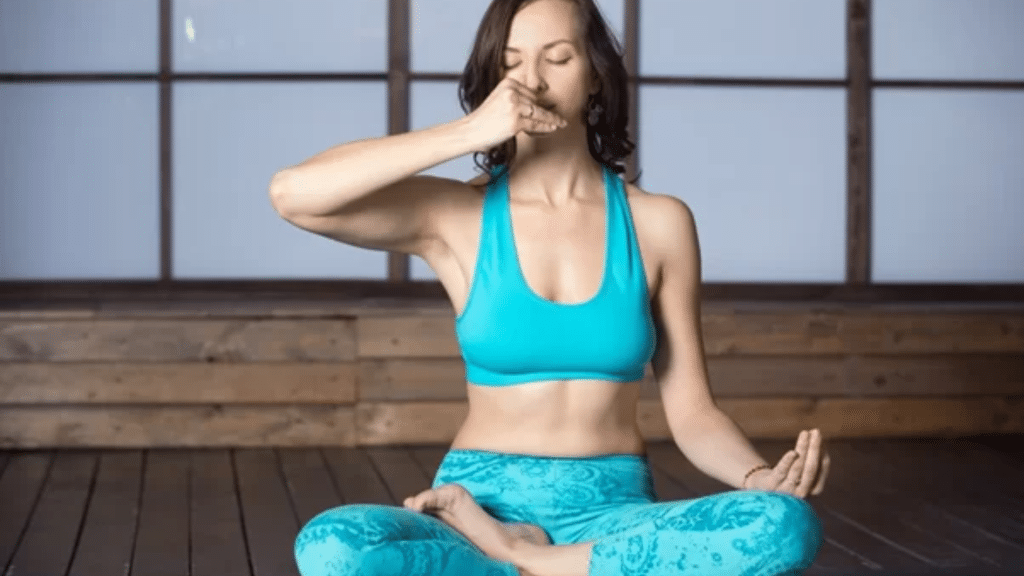
Breathing exercises from yoga can help strengthen your lungs and calm your nervous system. Pranayama techniques, like Alternate Nostril Breathing and deep belly breathing, improve airflow and oxygen levels.
These routines may also reduce stress, which can interfere with sleep. Practicing slow, controlled breathing daily, especially in the evening, can support better rest.
Poses like Cobra and Bridge can open your chest and throat. Start slow and build a routine that works with your current fitness and comfort level.
Singing and Wind Instrument Training

Using your voice or playing wind instruments can work the same muscles that control your airway. Singing with good technique helps strengthen the soft palate and throat, reducing the risk of collapse while you sleep.
Instruments like the didgeridoo have shown promising results in studies. Even humming or reading aloud with control for 10–15 minutes a day can help. These simple tools are low-cost and easy to add to your daily habits for long-term benefits.
Mouth and Tongue Exercises You Can Do at Home

Your mouth and tongue play a key role in keeping your airway open. Simple exercises, such as pressing your tongue to the roof of your mouth, sliding it back along the palate, or sticking it out and holding, can help tone the muscles that prevent snoring and blockage.
Try saying vowel sounds slowly and with force, or chewing gum to strengthen your jaw. Doing these exercises for 10 minutes twice daily may help reduce symptoms over time.
Sleep Routine and Environmental Adjustments
Your sleep environment plays a big role in how well you rest. Making a few simple changes to your routine and bedroom setup can ease sleep apnea symptoms naturally.
- Keep a regular sleep schedule: Go to bed and wake up at the same time each day, even on weekends.
- Avoid screens before bed: Turn off TVs, phones, and tablets at least an hour before sleep to help your brain wind down.
- Cool and dark room: Keep your bedroom dark, quiet, and slightly cool to support deeper and more restful sleep.
- Wash bedding often: Clean blankets and pillowcases weekly to reduce allergens that may cause congestion or blocked breathing.
- Limit heavy meals at night: Eat lighter dinners and avoid late-night snacks that can interfere with sleep quality or cause reflux.
- Use blackout curtains or a sleep mask: Reduce light exposure during sleep, which can disrupt your natural rhythm and make it harder to stay asleep.
- Try white noise or fans: These help mask small sounds that might wake you up or interfere with restful breathing.
These easy adjustments support better sleep and clearer breathing. Try combining a few to create a more comfortable, sleep-friendly space each night.
When to Seek Professional Help
Natural methods can support mild sleep apnea, but they aren’t always enough. If you still snore loudly, feel tired during the day, or wake up gasping for air, it’s time to talk to a doctor.
A sleep study, done at home or in a lab, can confirm if your breathing stops during sleep and how often. From there, a sleep specialist or ENT doctor can suggest the right treatment.
Getting help early can prevent serious health problems linked to untreated sleep apnea, like high blood pressure, heart issues, or memory trouble. Don’t wait if symptoms continue or worsen.
Conclusion
Now that you know how to cure sleep apnea naturally at home without CPAP, you’ve got a solid starting point. Simple changes to your daily habits, sleep routine, and diet can really make a difference.
Take a moment to think about which tips you want to try first, maybe it’s changing your sleep position, adding more anti-inflammatory foods, or starting a few breathing exercises. I’ve found that even small steps can lead to deeper, more restful sleep over time.
And if things don’t improve, don’t wait; talk to your doctor. Your health and rest are worth it.
Want more natural tips you can trust? Read my other blogs for practical guidance and sleep solutions that fit your life.

